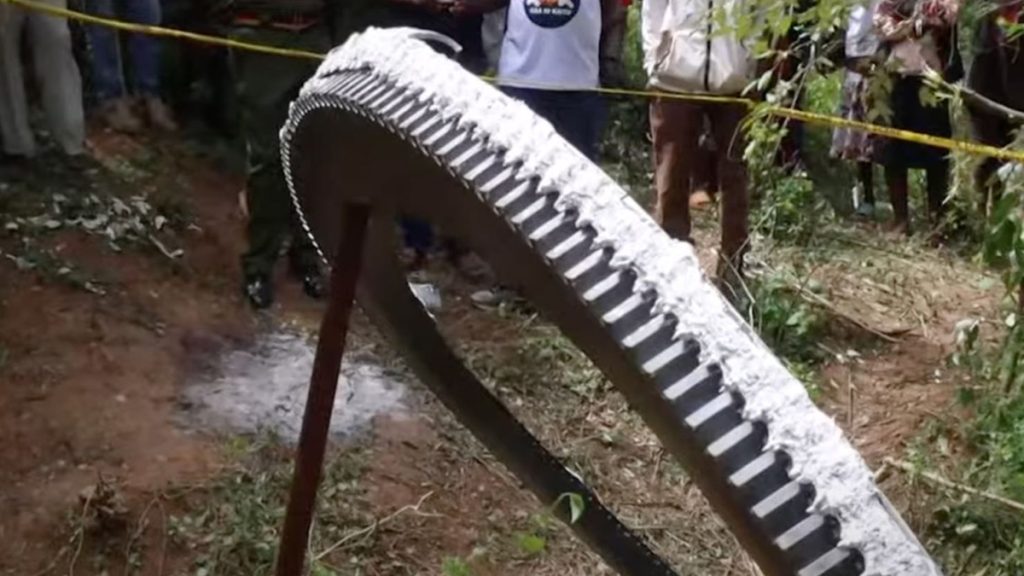A 500-kilogram metallic object recently fell from the sky in Kenya, raising significant concern and curiosity among local residents and authorities. The event, which occurred in a rural area of the country, has sparked widespread discussions and investigations into its origin, nature, and potential risks. The mysterious object, which was found scattered across a wide area, was initially thought to be debris from a satellite or space station. The object’s size, weight, and unusual composition immediately raised questions about its source and purpose.
Residents living near the crash site reported hearing a loud noise before seeing the object fall from the sky. The impact left behind a large crater, and the object was described as being metallic, with a shiny surface. The object was later identified as having characteristics consistent with man-made materials, further fueling speculation that it could be space debris, particularly given the increasing number of satellites and other objects launched into orbit in recent years.
The Kenyan authorities quickly mobilized a team of experts from various fields, including space science, engineering, and aviation, to investigate the incident. Initial reports suggested that the object could have been part of a larger piece of space equipment, such as a rocket booster or satellite, which had re-entered the Earth’s atmosphere. When objects from space re-enter the atmosphere, they typically burn up due to the intense heat generated by friction with the air. However, larger or denser fragments can survive the descent and crash to the ground, often causing a serious risk to people and property.
The government and experts emphasized the importance of investigating such incidents to ensure public safety. The falling object serves as a reminder of the increasing risks associated with space exploration, particularly as more private and government entities launch satellites and other objects into orbit. It also raises questions about the regulation of space debris and how the international community can better manage the growing amount of junk in space to avoid collisions with functioning satellites and prevent accidents like this one.
While there have been no reports of injuries from the fall, the incident has prompted calls for increased awareness and better preparedness for future events of this nature. It also highlights the need for more research into the impact of space debris on Earth, especially in regions with high population density. As the investigation continues, experts are working to determine the exact origin of the object and whether it poses any long-term environmental or safety risks to the region.
